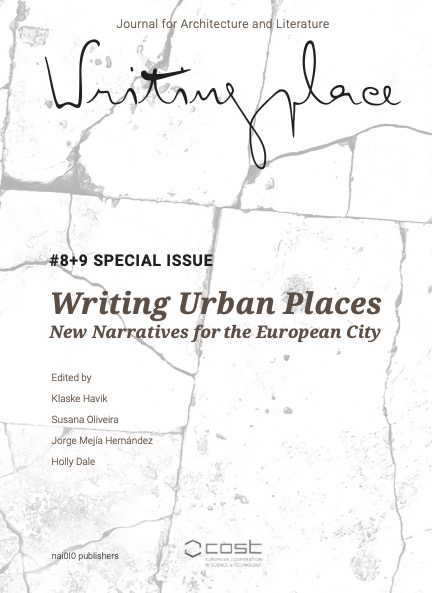Porto
Porto — Campanhã Collage. Stories from the City’s Edge
DOI:
https://doi.org/10.7480/writingplace.8-9.7255Abstract
Campanhã, the easternmost parish of the city of Porto, Portugal, is a land marked by problems of social and territorial cohesion, fractured by large-scale rail and road infrastructures, an area still torn between its past of rural tradition and the increasingly visible features of middle-class modernity with cosmopolitan aspirations. Campanhã Collage provides a kaleidoscopic overview of this area through four contributions based on the work of different projects with distinct methods, agendas and outputs, some of which focused on specific parts of the parish.
StreetArtCei, the first case, applies its method of digitally mapping street art routes to Campanhã, expressing specific cultural geographies and serving as a barometer of the city’s changing spaces. The Atlas of Literary Landscapes, the second case, proposes a collection of textual excerpts documenting the railroad and the Campanhã train station through Portuguese literature. The third case, The Worst Tours, an initiative of walking tours that offer a critical perspective of the city apart from mainstream routes, discusses and envisions possibilities of transformation. Its contribution includes coloured hand drawings, photos, and a poetic text, focusing specifically on Freixo, the riverfront area of Campanhã. Finally, A Drift in vacant Campanhã recounts the experience of URBiNAT, a project aimed to design opportunities to co-create an inclusive public space in these underutilized areas, together with local citizens and stakeholders.
Despite the evident differences in the nature of these projects, the juxtaposition of these stories and accounts provides alternative views of the fragmented territory of Campanhã. It also conveys a spatialized description of several of its multiple problems and possibilities. While not offering a comprehensive reading of this part of the city, the methods and fieldwork experiences used testify to the rich potential of each medium and allow for the construction of new meaningful itineraries.
References
Luísa Dacosta, Na Água do Tempo (Lisbon: Ed. Quimera, 1992)
Eça de Queirós, The Maias. Translated by Margaret Jull Costa. (New York: New Directions, 2007 [1888]).
Ferreira, I., & Moniz, G. C., ’Healthy Corridors for Inclusive Urban Regeneration’. in: How Many Roads Rassegna di Architettura e Urbanistica, 2019 (158).
Rui Lage, O Invisível (Lisbon: Gradiva, 2019).
Bruno Latour, Critical Distance or Critical Proximity. 2005, http://www.brunolatour.fr/sites/default/files/P-113-HARAWAY.pdf.
Fernando Pessoa, Poesias de Álvaro de Campos. (Lisbon: Ática, 1944 [1915]).
J. Rentes de Carvalho, Ernestina, 2nd ed. (Lisbon: Quetzal, 2010 [1998]).
José Saramago, Cadernos de Lanzarote (Lisbon: Caminho, 1994).
Daniel Tavares. ‘A Centralidade – um conceito urbano em evolução’. In M. L. Real (Ed.), A ponte e avenida: contradições urbanísitcas no centro histórico do Porto. (Porto: Câmara Municipal do Porto, 2001), pp. 13-19.
URBiNAT Porto Local Diagnostic, Porto: Câmara Municipal do Porto, DOMUS, CES, Universidade de Coimbra, GUDA, 2019.
Downloads
Published
How to Cite
Issue
Section
License
Copyright (c) 2023 Carlos Machado e Moura, Eliana Sousa Santos

This work is licensed under a Creative Commons Attribution 4.0 International License.



